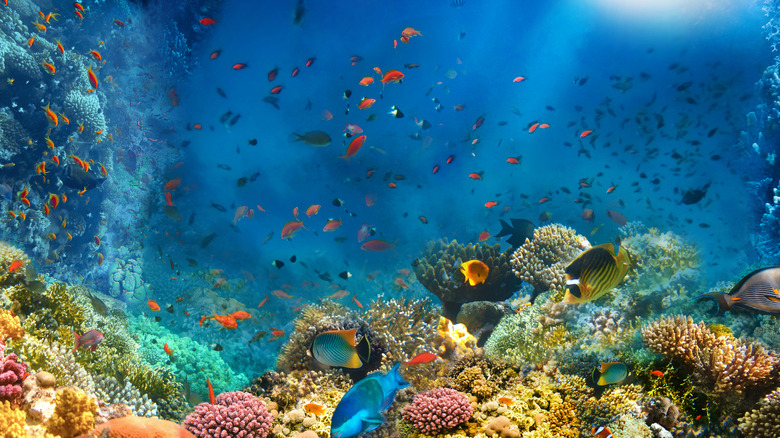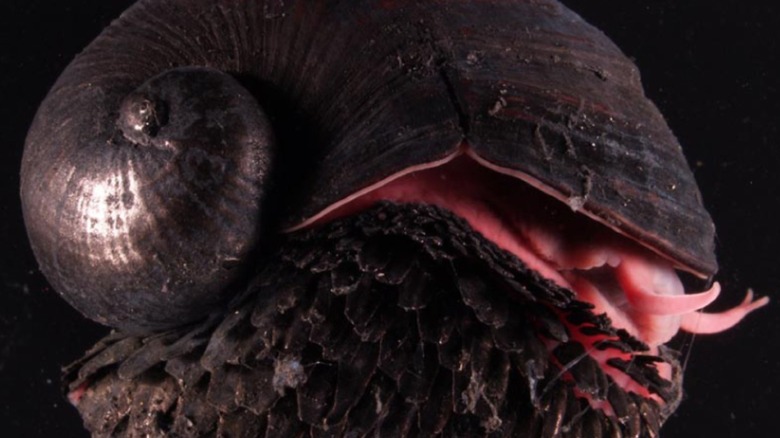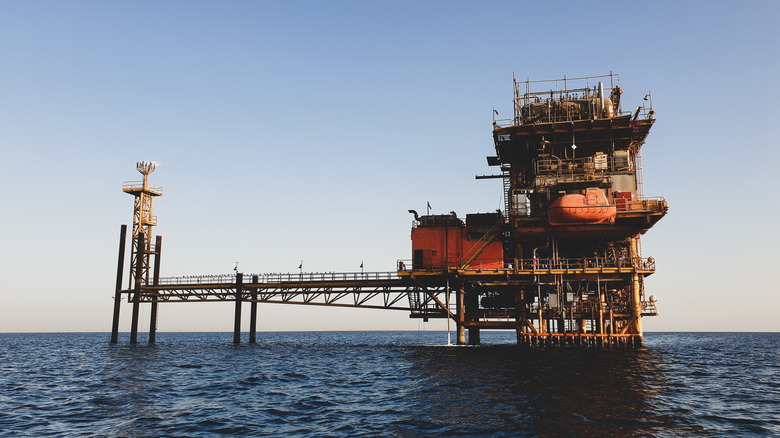Meet The Small Gastropod That Can Survive In An Extreme Environment
For all that humans sit at the top of the food chain, compared to some of the creatures in the animal kingdom, we're made of pretty weak stuff. Look at the wolverine, for instance: that critter, which weighs between 25 and 40 pounds and is part of the weasel family, might look inoffensive, but they can get seriously aggressive (via National Geographic). When the opportunity arises, they can even take down prey, like caribou, which are 10 times their size.
Other tough animals include the komodo dragon, a huge lizard that can weigh as much as an adult human (via Esquire). In addition to their size, komodo dragons have a serious case of morning breath: The bacteria in their mouths can be deadly if they bite you. Likewise, the Tasmanian devil has the strongest bite of any predator on the planet for its size, with nearly 100 pounds of total force, per Esquire.
But none of these animals hold a candle to the volcano snail. Also called the sea pangolin or scaly-foot snail, per All That's Interesting, this little animal lives in boiling deep sea vents in the Indian Ocean. In order to survive, it's evolved a pretty unique defense mechanism: It creates its own iron armor.
The volcano snail's armor
Volcano snails have a very limited habitat. Only 0.1 square miles of the ocean is suitable for sea pangolins, according to The Conversation. Most of that square footage is focused in a few main hydrothermal vents, including the Kairei hydrothermal vent and the Solitaire field along the Central Indian ridge, per All That's Interesting. These vents can hit temperatures as high as 750 degrees Fahrenheit (via Smithsonian Magazine).
These snails have some pretty cool physical features. For instance, they have the highest ratio of heart size to body size of any animal on Earth, with 4% of their body volume being taken up by their heart, per Science Focus. But a big heart can't protect from that kind of heat. As a result, over the years, the snails have been forced to find a singular mechanism to defend themselves: their shells. Those shells are not just made of organic material. They're made of iron.
How is this possible? The snails have sulfur in their scales which reacts to iron in the environment. This reaction creates an iron shell, per All That's Interesting. This suit of armor can protect sea pangolins from the massive waves of heat they experience in their natural environments, allowing them to thrive where many other animals would fail.
The fragile future of the volcano snail
Sounds like the volcano snail could survive anything, right? Well, not quite. Although the volcano snail's remarkable shell protects it from heat, it, like any animal, requires a relatively stable environment to survive. And it turns out that right now, that environment is in jeopardy, according to Nature. Deep-sea mining for precious minerals near the snails' vents may disrupt their habitats, per All That's Interesting. Though the process has not yet begun, technology is not far off the stage at which sea pangolin habitats could be destroyed, Smithsonian Magazine reports. And as deep sea mining is expected to only become more widespread in the future, scientists are concerned the situation will get worse and worse.
In fact, in 2019, the volcano snail was declared endangered, making it the first deep-sea animal to be granted that consideration because of deep-sea mining, according to Nature. Now, conservationists are debating giving similar status to other species that live in the vents, according to The Conversation. Unfortunately, whether this attempt to protect the animals will be successful is by no means assured.


